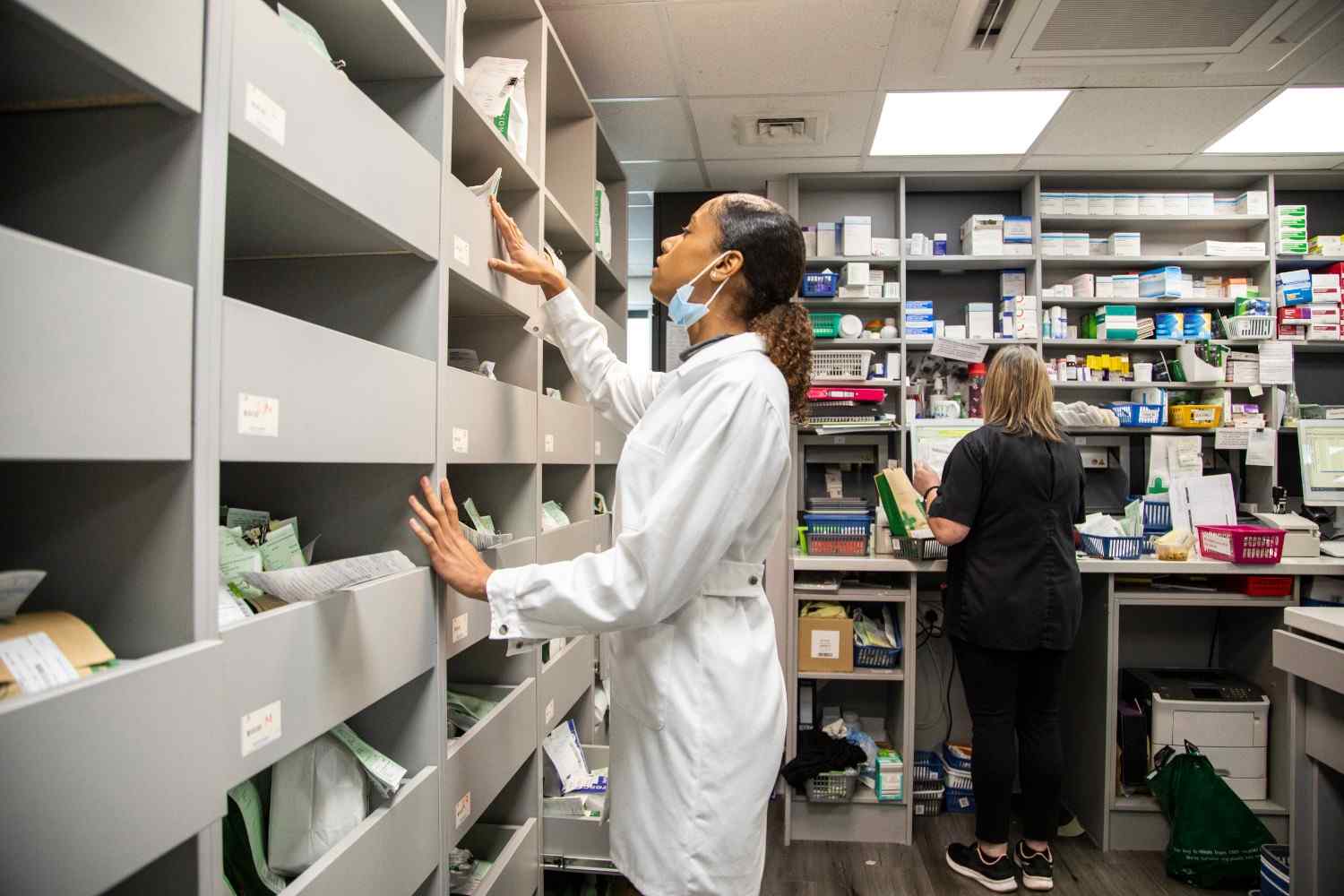Key Takeaways
The article explores how technology can solve critical challenges in healthcare supply chains, such as fragmentation, manual processes, and labor shortages. It highlights the role of AI, automation, and ERP modernization in creating smart, resilient systems. By adopting intelligent tools and strategic partnerships, healthcare providers can improve efficiency, reduce waste, and enhance patient care while preparing for future disruptions.
Overcoming Healthcare Supply Chain Challenges with Technology
The fragility of healthcare supply chains was never more visible than during the COVID-19 pandemic. Hospitals scrambled to locate PPE, critical care supplies, and essential medications, often competing with each other while dealing with fractured systems, incomplete data, and exhausted staff. Since then, inflation, global disruptions, and labour shortages have only added to the pressure.
The wake-up call is clear: healthcare supply chains can no longer rely on spreadsheets, siloed departments, or reactive decision-making. They must evolve fast.
This article explores how technology, particularly intelligent and AI-driven tools, reshapes healthcare supply chains to be resilient, streamlined, and future-ready. It’s not about solving today’s problems. It’s about building a foundation for what comes next.
The Core Challenges Plaguing Healthcare Supply Chains
A. Fragmentation and Siloed Systems
Walk into most large health systems, and you’ll find an assortment of tools, an ERP, an inventory platform, and a spreadsheet in a storage room. Each department or facility often works with its process, set of vendors, and view of inventory and supply flow. These siloed systems prevent any kind of holistic insight or coordination.
Without centralized visibility, decisions get made in the dark, and when a crisis hits, chaos follows.
B. Manual and Paper-Based Processes
Despite advances in digital healthcare, many supply chain operations remain shockingly analog. Inventory is tracked on whiteboards, orders are placed by phone, contract terms are stored in filing cabinets, and approval chains live in inboxes. The result is time lags, costly errors, and missed optimization opportunities.
C. Lack of Real-Time Data for Decision-Making
Outdated or incomplete data leaves teams constantly reacting instead of planning. A facility may run out of critical items because restocking decisions are based on last month’s usage, not tomorrow’s demand. This lack of foresight can be dangerous and expensive during pandemics or seasonal spikes.
D. Vendor & Contract Management Gaps
Most supply chains manage hundreds, sometimes thousands, of vendors. But tracking performance, compliance, or contract status is a massive lift without automation. Important details like pricing tiers, expiration dates, or rebate terms are easily overlooked. This leads to leakage, non-compliance, and missed savings.
E. Labor and Staffing Shortages
From supply technicians to procurement analysts, hospitals face severe staffing shortages. With limited hands on deck, critical tasks like inventory counts, sourcing reviews, or contract updates are delayed or dropped entirely. Strategic sourcing becomes an afterthought, while exhausted staff stay stuck in reactive mode.
The Role of Technology: From Backbone to Brainpower
It’s not enough to digitize paperwork or install a few software tools. What healthcare needs is a smart, connected supply chain that combines automation with intelligence.
Technology must do two things:
- Create a strong operational backbone—unifying systems, automating workflows, and eliminating waste.
- Inject brainpower—using AI and advanced analytics to predict, optimize, and guide strategic decisions.
When both work together, the supply chain becomes more than a back-office function. It drives clinical reliability, financial strength, and long-term system agility.
Building Blocks of a Digitally Enabled Supply Chain
A. Enterprise Resource Planning (ERP) Modernization
A modern, cloud-based ERP is the foundation of a connected supply chain. Centralizing data across procurement, inventory, finance, and operations creates a real-time view of everything from purchase orders to stock levels.
Benefits include:
- Unified data across locations.
- Mobile-enabled access for on-the-floor visibility.
- Integrated workflows that reduce delays between ordering, approvals, and delivery.
B. Inventory Management Automation
Technologies like RFID tags, barcode scanning, and IoT-enabled shelves transform inventory from a manual task into an automated process.
Hospitals can:
- Track inventory in real-time, across multiple sites.
- Set automated replenishment at PAR levels.
- Monitor expiry dates and storage conditions with sensor alerts.
The outcome? Fewer stockouts, less waste, and more accurate data for forecasting.
C. Data Integration Platforms
APIs and integration middleware help bridge the gap between legacy systems. These tools create a consolidated view of supply chain health by pulling data from EHRs, ERPs, vendor portals, and financial platforms.
With unified dashboards, teams can:
- Monitor inventory trends across facilities.
- Track total spend by category or vendor.
- Identify outliers or bottlenecks in real-time.
Intelligent Technologies That Drive Transformation
A. Artificial Intelligence (AI) & Machine Learning (ML)
AI takes your supply chain from reactive to proactive. It analyses patterns and predicts needs before problems arise.
Examples include:
- Forecasting demand based on historical usage, patient loads, and external factors (like flu season or shipping disruptions).
- Detecting anomalies, such as sudden spikes in item usage or unexpected price changes.
- Recommending vendors based on contract terms, compliance history, and delivery performance.
With AI and spend analytics technology, sourcing and inventory decisions become data-driven, not instinct-driven.
B. Robotic Process Automation (RPA)
RPA handles the repetitive, rule-based tasks that bog down supply teams:
- Generating and sending purchase orders.
- Matching invoices to contracts and receipts.
- Checking for missing signatures or outdated pricing.
This saves time, reduces human error risk, and allows staff to focus on value-added work.
C. Advanced Analytics & Benchmarking Tools
Modern supply chains need context. How do your prices compare to similar hospitals? Are you overusing certain products? Are your vendors performing to contract terms?
Benchmarking platforms provide:
- Peer comparison dashboards for cost and usage.
- Scenario planning to test the impact of bulk buys or supplier shifts.
- Custom alerts for when pricing, usage, or compliance deviates from the plan.
Implementation Strategy – From Vision to Execution
A. Assess Readiness & Identify Gaps
Before launching any initiative, assess where your supply chain stands today:
- What systems are in place?
- Where are the data silos?
- What tasks are still manual?
- Do staff have the tools (and time) to act on data?
This audit creates a realistic picture of your starting point.
B. Build a Phased Digital Roadmap
Don’t try to transform everything at once. Start where you can see quick wins, like digitizing inventory counts or automating invoice matching. These early victories build momentum and prove the value of digital investments.
From there, scale up to AI-powered analytics, contract automation, and cross-department integrations.
C. Invest in Change Management
Technology alone doesn’t fix processes; people do. That’s why change management is essential.
- Train staff on new tools and workflows.
- Update policies to reflect digital-first processes.
- Clarify roles between departments (e.g., who owns vendor selection? Who approves substitutions during shortages?).
When everyone understands the “why” behind the change, adoption improves.
D. Collaborate with Strategic Technology Partners
Choose partners who know healthcare. Look for those with:
- Proven success in hospitals like yours.
- Tools that integrate easily with your systems.
- Advisory support to help with onboarding, training, and optimization.
Valify is a standout in this space, combining supply chain analytics, benchmarking, and GPO access, all tailored specifically for healthcare systems.
Measuring ROI and Long-Term Value
A. Quantitative Outcomes
Once digital systems are in place, you can track tangible benefits:
- Reduced inventory waste and emergency purchases.
- Better sourcing terms from higher vendor compliance.
- Less time spent on manual processes, freeing staff for strategic work.
These gains add up quickly, both in cost savings and sustainable healthcare cost reduction strategies.
B. Qualitative Value
Not all value shows up on a balance sheet.
- Resilience: Systems can respond quickly during crises, from pandemics to local outages.
- Satisfaction: Clinicians get what they need, when they need it, without chasing supply teams.
- Patient care: Fewer disruptions, better preparation, and faster response times support stronger clinical outcomes.
Looking Ahead: Future-Proofing the Healthcare Supply Chain
We’re on the brink of a new era in supply chain management.
Coming soon:
- Autonomous systems that reorder supplies, renegotiate contracts, or flag compliance issues, all without human intervention.
- Integration with clinical outcomes to track which supplies correlate with better recovery rates, fewer infections, or shorter stays.
- Sustainability metrics built into vendor scoring help hospitals meet ESG goals and reduce environmental impact.
The healthcare supply chain of tomorrow is smart, self-aware, and patient-aligned.
Conclusion: Technology as the Strategic Advantage
It’s time to stop viewing the supply chain as a cost center or a background function. With the right technology, it becomes a financially, operationally, and clinically driven value.
A resilient supply chain supports patient care. A connected one supports decision-making. And an intelligent one sets you up for whatever comes next.
Valify brings the tools and expertise to make this shift a reality. From data-driven sourcing to digital contract oversight and real-time benchmarking, Valify helps healthcare systems transform supply chain challenges into competitive advantage.
FAQs
Q1 – What makes purchased services different from traditional supply chain categories in healthcare?
Unlike traditional categories like medical supplies, purchased services in healthcare are complex, decentralized, and often lack visibility. They involve contracts, performance metrics, and vendor management, making them harder to track and control.
Q2 – How does Valify help hospitals reduce costs in purchased services?
Valify provides benchmarking, contract analytics, and vendor performance insights to identify savings opportunities, reduce contract leakage, and streamline vendor negotiations.
Q3 – Can Valify integrate with our existing ERP or procurement systems?
Valify is designed to integrate seamlessly with major ERPs and procurement platforms, enabling smooth data flow and minimizing disruption to current workflows.
Q4 – What kind of results can we expect by implementing Valify?
Through Valify’s data-driven platform, hospitals typically see measurable cost savings, improved vendor compliance, reduced manual effort, and faster sourcing decisions.
Q5 – Does Valify support long-term transformation or just one-time savings?
Valify supports sustainable, long-term transformation by enabling continuous benchmarking, real-time analytics, and strategic sourcing improvements across departments.

Shara Smith serves as the Marketing Director for both Valify and Valify Solutions Group, where she oversees all facets of marketing, including strategic planning, branding, digital marketing, and event management. She joined Valify in September 2021, bringing with her a wealth of experience in healthcare marketing and business development.


